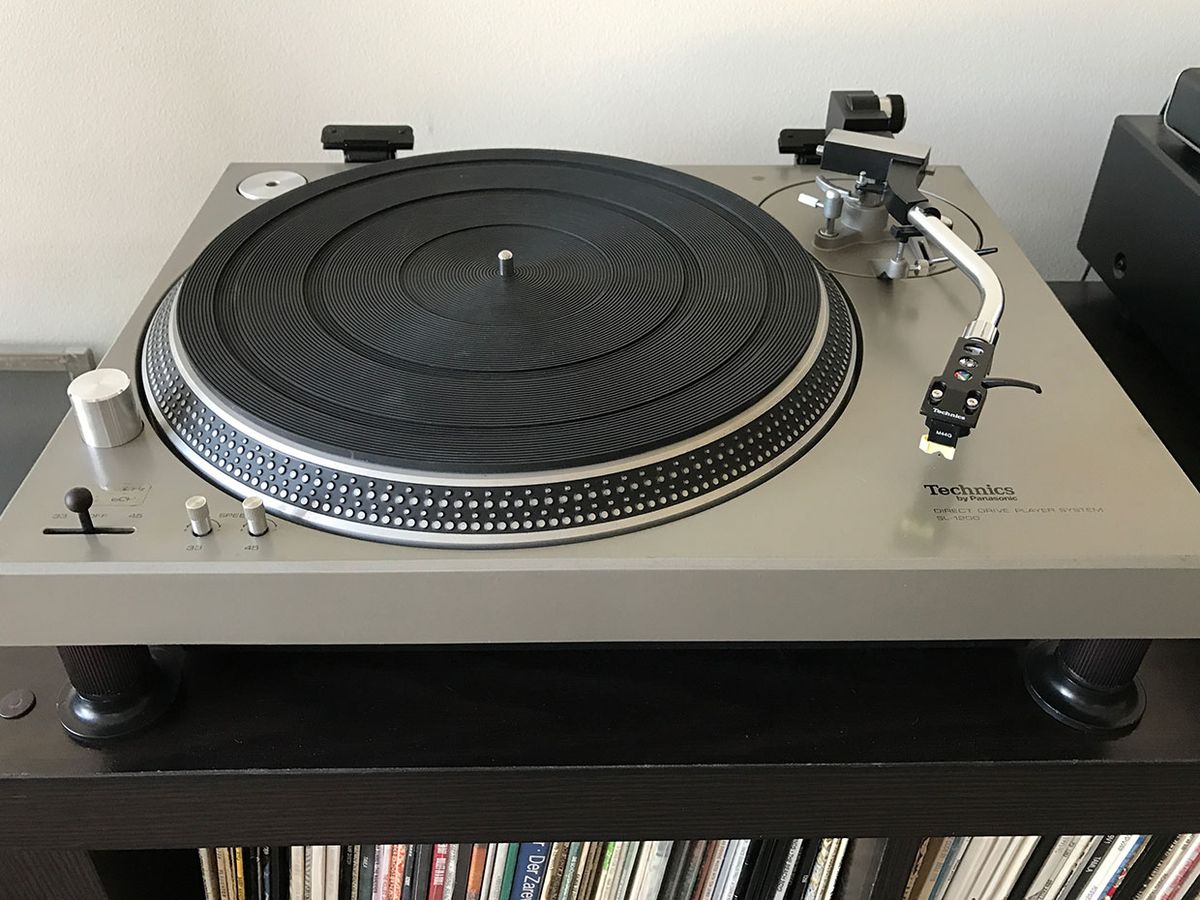The Consumer Electronics Hall of Fame: The Matsushita/Technics SL-1200
The Technics SL-1200, a pioneering direct-drive turntable, earned the distinction of being a musical-playback device that was also used as a musical-performance device

The direct-drive turntable is the only music-playback device to become a musical instrument itself. In this role, the turntables were an essential element in the development of hip-hop, the most popular and enduring new musical genre in the last 50 years. And there was one specific model that was overwhelmingly used in early hip-hop: the Technics SL-1200.
It was a surprising twist in the long history of recorded sound. Of his many inventions, Thomas Edison liked the phonograph best. His original machine, built in 1877, recorded on cylindrical media. Then in 1892, Emile Berliner began commercializing disk-shaped records. The overwhelming success of the platter format led to a complete takeover of the market by turntables. Many of the first models relied on cranks and flywheels to spin discs at a consistent speed. To spin the platter, some of the early machines used idler-wheel drives: the motor spun the idler wheel, and the idler wheel turned the platter. Belt drives were the next step (and opinions vary as to whether the step was forward or backward).
Turntable manufacturers understood that it could be advantageous to dispense with belts, which weren’t ideal for maintaining a consistent spin rate and were also prone to failure. Some tinkered with direct-drive turntables, but a direct-drive would require very precise control of motor acceleration and speed, and achieving that in a mass-market record player remained impractical for decades.
Electronics finally provided the means. The first electronic direct-drive turntable, the SP10, was designed by Shuichi Obata, an engineer with Matsushita’s Technics division. It hit the market in 1969 (MoMA has one in its permanent collection). The SL-1200, also designed by Obata, came three years and a few product models later.
Direct-drive turntables have high torque, which means that, among other things, they spin up to speed almost instantaneously. They also tend to be superior when it comes to maintaining a constant speed, virtually eliminating wow and flutter—audible pitch variations that occur because the record is being rotated at an inconstant rate. By the early 1970s, radio disk jockeys, club DJs, and recording engineers had started adopting direct-drives.
The issue was not just the sound. Direct-drives were attractive because they could be manually manipulated without damaging them, an issue of paramount importance to DJs. On a belt drive, playing a record from a standing start is dicey, because a belt-drive takes a frequently unpredictable amount of time to accelerate to the designated speed. If you place the needle in the record groove too close to the start of the song, the platter won’t be rotating fast enough when the music starts, and you get an off-pitch rev-up. Start the needle too far in advance and you get an awkward silence. So in that belt era, DJs developed a technique called the slip cue. They would find the beginning of the song on the record, back up a fraction of a rotation, and leave the needle in that spot while manually holding the record platter motionless on a spinning turntable surfaced with a felt mat. The instant they wanted to start the song, they released the record. Cuing a song correctly with that technique was an issue of professional pride for DJs back when they still spun records, because a) it sounded good, and b) if not done adeptly, it could cause wear and tear on the belt-drive mechanism.
Because direct-drive turntables have such superior torque, slip-cuing works better on them. Spinning them backwards—a no-no with belt drives—is not a problem. For DJs, that feature meant they could quickly and easily spin a record backward to find a cue.

Regardless of whether working for a radio station or a club, any DJ has at least two turntables. Ordinarily, the only time they’d both be playing audibly was during the segue from one to the other. However, in the early 1970s, some club DJs began experimenting with keeping both turntables live and while one was playing, they’d cue the other aloud over the speakers, sometimes so rapidly the distorted sounds were in time with the beat of the music coming from the other turntable. That technique, called scratching, quickly became the signature sound of early hip-hop. Scratching was impossible on belt drives, because it would destroy them.
The turntable of choice for years was the SL-1200. Having direct-drive turntables was essential, and Technics had the prestige of being first to the market. It also helped that the SL-1200 was readily available and rugged enough to throw in a van and haul to a party hours away.
The SL-1200 product line remained in production for 38 years, starting in 1972. Technics kept making them long after CDs had elbowed aside vinyl records and even after streaming had started elbowing aside CDs. Eventually, declining sales finally forced the company to discontinue the line, in 2010. Then something unexpected happened: a small but sustained revival of the LP format. Technics resumed manufacturing SL-1200s in 2016.


